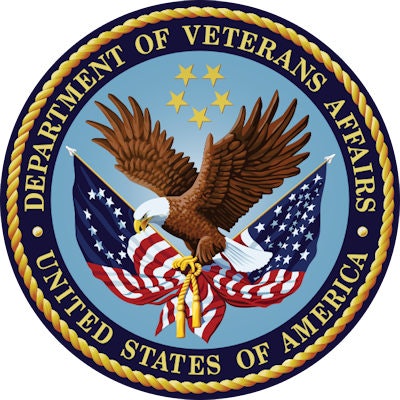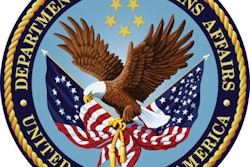
A massive review of outpatient radiology and nuclear medicine services in the U.S. Veterans Health Administration (VHA) found that 17% of routine requests and 25% of urgent orders for outpatient imaging were not performed in a timely fashion.
The audit blamed the delays on chronic staff shortages among scheduling staff, caused in part by pay disparities between what VHA personnel make and the salaries they can pull down in the private sector. Aging equipment in the face of rising imaging procedure volume was also cited by investigators.
Despite the problems, investigators found that for the most part, veterans received recommended follow-up care, with 91% of follow-up recommendations completed in a timely fashion.
A history of delays?
The U.S. Veterans Health Administration provided outpatient radiology and nuclear medicine services to 2.6 million veterans in fiscal 2018, at a cost of $2 billion. Use of medical imaging services in the system has grown at a 2% average annual rate from fiscal 2013 to fiscal 2018.
But the system has also experienced a series of highly publicized backlogs and delays, and individual Veterans Affairs (VA) centers around the country have been accused of inappropriate cancellations of imaging services. In one high-profile case, problems in radiology scheduling at a VA hospital in Phoenix led to delays in imaging exams, while in another case a VA hospital in Texas was accused of manipulating patient scheduling to make it appear that procedures would appear to be completed when actually they were not.
The report released December 10 by the Office of the Inspector General (OIG) in the U.S. Department of Veterans Affairs was commissioned as an audit of the national VA system following the previous investigations.
The report begins by describing the process for ordering imaging exams. Orders are entered into the radiology software module of the Veterans Health Information Systems and Technology Architecture (VistA), with clinicians specifying the earliest date at which they want the exam completed. This is referred to as the clinically indicated date.
VA policy requires that normal exams be completed within 30 days of the clinically indicated date and within 14 days for urgent requests. More broadly, the VA has a goal of performing 90% of all routine exams within the 30-day window.
The review found that it took an average of 15 days to complete 660,000 requests for routine and urgent imaging exams. But 115,000 exams -- or 17.4% of the total reviewed -- were not completed in the recommended time frame.
And many of these delayed exams could have had clinically important findings. Of the 115,000 requests, 54,100 exams (47%) resulted in a recommendation for follow-up care by a physician. And for 46,300 requests for imaging, it took an average of 40 days to complete the initial request and then an additional 45 days to complete the follow-up care.
| Performance of VHA in completing imaging requests | ||
| Routine requests | Urgent requests | |
| No. of imaging requests | 610,000 | 49,400 |
| Average overall wait time | 15 days | 11 days |
| No. of untimely requests | 103,000 | 12,100 |
| Untimely requests as percent of total | 17.4% | 24.5% |
| Average wait time for untimely exams | 43 days | 34 days |
Why were the delays occurring? The audit found that a major problem was that directors of VA facilities didn't manage the resources of scheduling staff to meet increased demand. Another factor contributing to delays were equipment shortages and insufficient monitoring of imaging requests.
Staff shortages were attributed to hiring and retention issues for radiologic technologists due to salary disparities between the VHA and the private sector, according to the report. VHA facilities also reported difficulty keeping radiology scheduling staff because they have a lower promotion pay grade compared with other schedulers in other VHA medical services.
Indeed, the investigation found that workload was linked to delays in completing requests: six VHA facilities that had problems completing timely requests had 16% higher workload than two facilities that usually met VHA turnaround guidelines. To address the issue, the VHA plans to implement a staffing guide that provides workload expectations for schedulers so individual facilities can better determine how many schedulers are needed based on their volume of radiology and nuclear medicine studies.
Equipment shortages were also cited as issues contributing to delays. Some facilities said that CT and MRI scanners needed to be replaced because they were at the end of their lifecycles and were frequently not operational due to maintenance, while other sites said that they needed additional scanners to meet growing demand for imaging.
The OIG investigators found fault with how facility staff monitored access to radiology and nuclear medicine services, such as by reviewing lists for patient wait times. Staff didn't compare apples to apples when monitoring wait times, which made it difficult to see how the system was performing. The system has since changed its monitoring policies.
Finally, the report looked into how the VHA managed canceled requests for imaging exams. This issue has developed as the system tried to clear a large backlog of incompleted orders, many of which were considered "obsolete," or no longer needed. Investigators found that out of 442,000 requests to cancel exams, proper procedures were not followed in 106,000 cases, or 24% of the total.
The OIG came up with a list of eight recommendations to address delays in the VHA system, ranging from requiring that facility management review the workload for schedulers to make sure it is evenly distributed to setting up an oversight function for reviewing canceled requests and making sure that all patient needs for imaging are ultimately met.



















